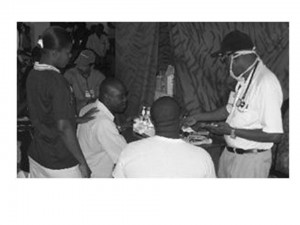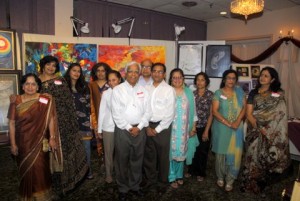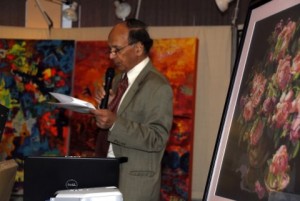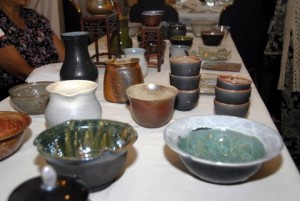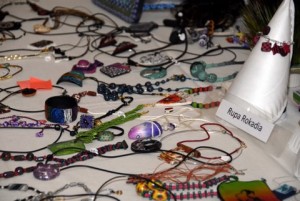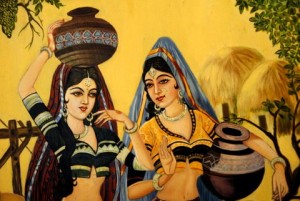Archive for category October 2010
Elections for the Office of the Governor
Posted by admin in October 2010 on October 17, 2010
By Dan Onorato
Editor: Mr. Dan Onorato, the Chief Executive of Allegheny County, is the Democratic Candidate for the office of the Governor of Pennsylvania in the November elections.
I am a second-generation Italian-American and as a child, my grandparents told me stories about their lives in Italy and instilled the importance of tradition and heritage. I understand that you, as a member of the vibrant Indian-American community experience these same feelings and emotions. I want you to know that I will fight for an inclusive and prosperous Pennsylvania, just as I have done in Allegheny County – a state with greater economic opportunity for all of our residents.
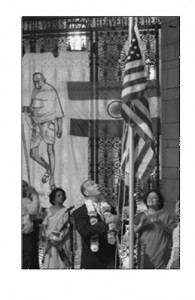
County Executive Dan Onorato hoisting the Stars and Stripes in an Indian-American function in Pittsburgh.
When I became AlleghenyCounty Executive in 2004, our region was losing population and employers and the county faced a substantial budget deficit. Today, after six years of my leadership, our county’s unemployment rate is lower than both the state’s and the nation’s and there are more people working in Allegheny County than anywhere else in Pennsylvania.
The next Governor of Pennsylvania will face a serious budget crisis and have to immediately restore fiscal responsibility to state government. I am the only candidate who has a record of turning around the economy, balancing a budget and running a government. I worked to turn around Allegheny County’s economy by making companies want to invest in the region. We need that same approach for all of Pennsylvania, and if I am elected Governor, jumpstarting our economy will be my highest priority.
Our state’s diverse economy has the potential for unbridled growth, but first we need to improve Pennsylvania’s business climate. As Governor, I will work to institute three key changes: 1) make business taxes more competitive; 2) make the permitting process business-friendly so that companies are assured of timely and consistent decisions when they want to invest in our state; and 3) ensure that our schools and workforce development programs successfully prepare the next generation of high-skill workers.
We need to ensure that our education system prepares our children for good jobs in the future. Last year, my oldest daughter left for college and like most parents, I want her to have the opportunity to not only live in Pennsylvania but to work in a thriving economy.
To do that, we need to start making the changes Pennsylvania needs by embracing our colleges and universities as springboards for 21st century professions and to expand Pennsylvania’s economy, and making college affordable for hard-working families.
We need to revitalize Pennsylvania and that is what I will do as our next Governor. I invite you to visit www.voteonorato.com to learn more about my plans to improve our Commonwealth.
I hope to see you at the polls on November 2. I need your support.
Delta’s Nonstop Flight to Paris Eases Travel to India
Posted by admin in October 2010 on October 17, 2010
Over 200 people were at the Hilton downtown for the reception organized by Ken Zapinski, senior vice president of the Allegheny Conference of Community Development and his staff in cooperation with the Pittsburgh International Airport and Delta Airlines. Bradley Penrod, the CEO of the Pittsburgh airport and Wayne Aaron, Delta’s vice president for corporate strategy addressed the gathering.
The organizers wanted to reach the Indian-Americans in the area for making better use of Delta’s nonstop flight to Paris. This is the first time such an interaction was taking place here between an air carrier and Indian-Americans. With this nonstop flight, travelers can reach Bangalore, Mumbai and Delhi with just one 3-h stopover in Paris by taking Air-France’s connecting flights from Paris to Indian destinations. This saves at least four hours travel time, not to speak of missed connections at JFK, Newark, or Detroit. This flight is convenient to business travelers, tourists, young parents traveling with toddlers/kids, and seniors traveling between Pittsburgh and India.
Towards the end of June officials of Delta Airlines, Pittsburgh International Airport, and the Allegheny Conference of Community Development met with Indian-Americans to promote Delta’s nonstop flight to Paris, which greatly simplifies travel to Indian destinations. This flight is Pittsburgh’s only nonstop trans-Atlantic flight to Europe.
Bradley Penrod and Wayne Aaron asked their audience to spread the word around of this Pittsburgh-Paris nonstop flight. Aaron asked his audience to give him both bouquets and brickbats on Delta flights. His audience did not disappoint him. Some of the complaints he heard are:
1. Not getting the boarding passes for the Paris-India leg of the journey when checking-in at Pittsburgh. This causes frustrating — and entirely avoidable –problems at Paris as people have to stand in line again at the Air France counter for the boarding pass to India. Is not Air France a member of Sky Team?
2. Not having nonstop Air France or other carriers’ flights from Paris to Chennai and Hyderabad, the cities that have good traffic to and from North America. For travelers from Pittsburgh, not having nonstops from Paris to Chennai and Hyderabad nullifies the advantages of the Pittsburgh-Paris nonstop flight.
3. The hassle of Delta’s older narrow-body Boeing 757 for the long Pittsburgh-Paris trans-Atlantic flight, and the need for improved cabin service, particularly in Air France flights to and from Paris and India.
Another suggestion was to reach out to passengers from this region bound for destinations in North Africa, Middle East, and Southeast Asia, who too can reach their destinations with just one stopover at Paris. This can also increase the load factor and revenue for the Pittsburgh-Paris flight.
With the interactions Aaron had with his listeners, chances are better now than before that Delta may fix some of these problems.
Delta’s Aaron briefly gave the highlights of the gut-wrenching changes in the airline industry. We all know. Airlines these days charge for checked-in bags, pillows, and blankets, and don’t serve even water in shorter flights to cut costs. The decline in the quality of cabin service in domestic flights is obvious for seasoned travelers.
But don’t expect a miracle any time soon. Why? Because air carriers live and die by a) load factors (the % of the seats occupied by paying passengers); and b) the revenue stream for each flight, which depends on the number of business travelers and the class of tickets airlines sell in the coach class.
Aaron told his audience that while the average load factors for Delta’s trans-Atlantic flights hover around 80%, for the Pittsburgh-Paris nonstop flight, it is low, only around 67%. If the passenger traffic and revenue stream for the flight improves, Delta is bound to deploy newer larger planes and give better cabin service.
In today’s globalized economy, easy access for travelers to Europe through nonstop flights is important for promoting Pittsburgh. We need to support these efforts by using the nonstop flight to Paris.
Along the way, if it also makes our life easier, we should give it serious consideration.
Our elected officials, Pittsburgh airport officials and business leaders are trying hard promoting Pittsburgh as a business friendly city with all modern amenities for starting and running businesses and for living and raising families — amenities such as excellent public and private schools, universities for higher education, medical facilities, recreation and entertainment resources, museums and arts that we have in abundance.
In today’s globalized economy, easy access for travelers to Europe through nonstop flights is important for promoting Pittsburgh. We need to support these efforts by using the nonstop flight to Paris.
Â
Volunteer Work in Haiti After the Big Quake
Posted by admin in October 2010 on October 17, 2010
By Vasu Malepati, MD, McMurray, PA
Editor’s Note: Vasu Malepati, an ear-nose-and-throat surgeon working from the Mon Valley Hospital, is a long-time resident of the Pittsburgh Metro area. After his medical degree from the Venkateswara Medical College in Tirupati, Andhra Pradesh, he reached the US over three decades ago. Malepati is medical missionary of sorts: He worked in the 2001 Indian earthquake relief efforts; spent three weeks in Sri Lanka after the tsunami in 2005 that swallowed nearly 200,000 people; and volunteered in Indonesia during the tsunami. He has treated needy patients in Honduras, Guatemala, British Guyana, and Vietnam. He participated in two separate medical missions to the Philippines, and conducted free clinics there performing surgery with his colleague Dr. Chito M. Crudo, a gastrointestinal and general surgeon at the Mon Valley Hospital.
In late January this year, an earthquake that geologists have been warning Haitian leaders for years, pretty much leveled Port-au-Prince, killing over 200,000 people, destroying the entire city and the island nation. The damages of the severe quake (measured at 7.0 on the Richter scale) were made worse by the criminally negligent building practices in Haiti, traceable to endemic corruption at every level in the country.
It was heart-wrenching to see men, women, and children waiting for hours to be seen by a doctor at the clinic. In the midst of the utter devastation, they were patient
In the weeks after the quake, with twelve men and women from across the US, I was in Haiti working towards alleviating the pain and suffering of the people of Port-au-Prince, the capital, to the extent we could. The twelve of us were from the Satyasai Medical Association International (SAI), which established a Haiti Earthquake Relief Fund. We—five doctors, two nurses, and five nonmedical volunteers—spent five days treating over 1,500 patients in St. Angeles Church in a makeshift clinic.
It was heart-wrenching to see men, women, and children waiting for hours to be seen by a doctor at the clinic. In the midst of the utter devastation, they were patient and grateful for the help they were receiving, both medical and emotional. We treated medical emergencies as well as non life-threatening conditions such as hypertension and anxiety.
We stabilized patients needing further medical/surgical care and sent them to the International Medical Corps in downtown Port-au-Prince. We gave medications to sick families, and a volunteer from the SAI group cooked and served meals for the public. With my wife Dr. Durga Malepati, we provided free medical checkups and distributed clothing to children.
We at SAI group, joining the American Red Cross and St. Angeles Church, made arrangements for lodging, food, local transportation, and a translator from the local French dialect to English.
I have been to many places of natural disasters, but what I saw in Haiti was the worst and will never leave me. People were wandering the street looking for water and food. The damage was utterly devastating. I felt it was my responsibility to help people in any way I could.
Because of the dire need for medical attention and the gratitude of the Haitian people I saw, my experience in Haiti is one of the most satisfying mission trips for me.
There still is much to be done. They need medical care, emotional and financial support, and all kinds of assistance. They need our time. They need your time. The needs of the Haitian people are many, from medical care and housing to learning English and nutritional meals.
To find out how you can help, visit www.redcross.org or www.UNICEF.org, contact local church groups, or donate online. Medical professionals can also volunteer through International Medical Corps or a local volunteer organization near you.
I plan to return to Haiti to provide additional medical care and to follow up on the people I treated.
Many people have asked me about the motivation for me to go to places where Nature unleashes its fury. I can only recall the words of my Guru Sai Baba: “Helping hands are holier than praying lips.” I am also inspired by Mother Theresa’s Simple Path: “The fruit of silence is prayer. The fruit of prayer is faith. The fruit of faith is love. The fruit of love is service. The fruit of service is peace.”
Triveni Int’l Club’s Colorful Arts Event
Posted by admin in October 2010 on October 17, 2010
e-mail: samar_k_saha@yahoo.com
The Indian Diaspora, I always believed, have a lot of hidden talents other than what they do professionally for living. They must have inherited some of the artistic genes of their ancestors who have amazed the world in past and present. This got a boost in the art exhibition organized by Triveni International Club at the India Gardens in Monroeville on August 28, 2010. Chairperson, Dolly Luthra, summed up the event nicely: “Pittsburghers have artistic talents. Some are well-known locally and elsewhere. Many are in other professions and pursue their artistic interest in anonymity in spare time. The idea behind organizing the event is to have the artists share their talent with the community at large.”
T he displays and the artists were all there – a dozen or so participants.Â
Manenda Bhende, a physician specializing with the victims of child abuse, put her mark on ‘darkness-to light’ theme on at least two of her paintings. Brightly colored balloons floating over a dark river of cruelty makes you think how hope and despair can live side by side. Sarika Goulatia, a CMU arts graduate, presented her work inspired by the political events in an abstract style — open to viewer’s interpretations. Terrorist attack in Mumbai and the resulting devastation was well put in dashing brush strokes in acrylic.Â
Rashmi Bhalakia presented her art of Rangoli. It made you wonder how Rangoli, an ancient cultural tradition and folk art dating back to the time of Mohen-Jo-Daro, has survived so beautifully.
Sunil Parulkar, a urologist, told us how he likes to create simple pleasures of life that people can relate to. His drawings were truly of professional quality which brought chuckles to every face. As satirical as these cartoons were, there were also touches of hilarity in many of them.
Chitra Teredesai’s work was visually wonderful. She has exhibited her creations before in the US. For this exhibition she presented some of her study of Rajasthani faces depicted in water color. Each face carried powerful emotions that simply drew you to the subjects like a moth to a flame.
Asmita Ranganathan, another healthcare professional and a part time illustrator for a children magazine “Bala Gokulam” presented her pencil sketches and water colors. Mahendra Shah, an architect, loves jokes and his professional level cartoons tell you that. It was fascinating to see how meticulous and patient he is in two of his framed works detailing the traditional intricacies of the Mithila School of Arts style.
Pratibha Khurana displayed an acrylic version of Napoleon Crossing the Alps, which showed the gusto reserved only for the heroes of the lore. Her other works were there in oils.
Rani Kumar, an ER physician, presented a few pieces of her charcoal and pencil work and explained how she soothes her raw nerves from the day’s work related tensions and drudgeries by burying herself in arts.
Kiran Parikh and Rupa Rokadia demonstrated and explained the art of working with polymer clay, shaping into various forms of art objects. Kamalesh Aggarwal displayed his paintings and photographed the work of others through the eyes of a camera.
Neera and Neeraj Tayal’s painstaking needle work and framed photos were simply beautiful. Some photo were so good, they looked straight out of National Geographic.
Yasmeen Ariff-Syed’s artistic talent was on display in her creations with clays with many of her glazed pottery work exhibited.
One of the well established artists of the region, Harish Saluja was also there. He invited all to his exhibition Mandalas & Deities – Recent Paintings at the Mendlson Gallery from September 3 to October 2, 2010.
Juginder Luthra of Weirton, one of the organizers, thanked the Steubenville Art Association for lending the display panels and Weirton Area Museum and Cultural Center for the easels and the projector.
It was very heartening to see so many artists living among us getting encouragement from their friends and peers. The glow on their faces told the story of all the hard work that went behind the scene.
Note: Amar Khurana of Moon Township took the pictures used in this article. He has been a Pittsburgher for nearly three decades practicing internal medicine. Amar Khurana also created the collage of pictures you see on the cover page.
Â
Â
Indian Cable TV
Posted by admin in October 2010 on October 17, 2010
By Kollengode S Venkataraman
Cable TV has pervaded India. In every medium-size town and its surroundings, you get Bangla, Gujarati, Marathi, Tamil, Malayalam, Telugu, Kannada, Hindi, and Punjabi channels; and Indian English channels, BBC, Nat.Geo, and the Indian versions of CNN and CNBC. This had transformed India in many, many ways. Here are some:
India’s many cable TV channels hold music competition in all Indian
languages for those under 25. Invariably, these youngsters choose semiclassical or fully classical film songs, a genre in which India has an extensive repertoire of lyrics in all languages. The songs are in the language of the TV station conducting the program. Asia Net, the TV station in the Malayalam language of Kerala, is an exception. In Asia Net, competitors can sing Tamil, Telugu, Kannada, Malayalam, and Hindi songs. The judges are veteran music directors or playback singers, who are very fussy when they assess the singers after they display their best skills.
Cable TV has given these youngsters opportunities to display their talents, something they never had before in the monopoly days of government-run TV. In Jaya TV’s Ragamalika program, veteran musicians in front rows are seen enjoying as they watch the youngsters’ musical talents.
These youngsters don’t seem to come from homes with a long tradition in classical music. They don’t have the pedigree we see in the hyped-up brochures of Indian classical musicians visiting the US. Which makes me wonder how much farther these youngsters would have gone — and how much wider the ticket-buying audience base for classical music would have been — if only these youngsters had the opportunity to learn Indian classical music formally. These youngsters are India’s Ekalavyas today.
An assortment of religious channels – Hindu, Christian, Islamic,
and Sikh, widely varying in the quality in what they peddle and how they peddle it – also crowd the airwave. It is funny to watch American Christian televangelists’ fire-and-brimstone sermons dubbed in Indian languages. Having watched them on TV here – I watch them more for entertainment than enlightenment — they appear to speak in tongues!
The false piety and religiosity on garish display on many religious channels have made even my 84-year old religious – not religiose – mother skeptical of these Merchants of Gods. Only a few of them are good. Isha Yoga Center, for example, persuades people not to get embroiled in excessive religiosity, emphasizing lifestyles based on work, faith, simplicity, charity and contentment.
Tamil, Telugu and Kannada masala films on Cable tell another story. In these, actors with make-up to look dark, rustic, rural, less educated and oily-looking, continue to chase svelte and light-skinned — “wheatish” in the Indian lingo — socially upper class kunwaris (girls) in song sequences. They feed the fantasy of filmgoers by making the “wheatish” belles madly in love with the dark, rustic heroes from a socioeconomic class several notches lower in the Indian social pecking order.While in Coimbatore last year, I read a graphic Tamil film title Karutta Paiyyan Sevatta Ponnu — meaning literally, A Dark-Skinned Boy and A Light-Skinned Girl. Several years back, the Kannada filmdom gave this gem of a title for a film: Bili Hendati — literally, White Wife.
These days, light-skinned South Indian belles are not good enough to whet the fantasy of South Indian filmgoers. So they import “wheatish” Punjabi kudiyans to the mix of heroines taking full advantage of the technology in dubbing. (Bollywood now has European, Central Asian, and South American belles.)
In these films, the hero is portrayed not interested in taking advantage of the heroine’s advances, at least initially. But soon, all hell breaks loose and they chase after each other in exotic locales lip-synching songs with convulsive dance moves that put MTV to shame. In this MTV adaptation of film songs — invariably group songs with the hero and heroine amidst a bevy of starlets in contrasting costumes — the dresses for the women have become tighter and skimpier. Further, the extremely physical and tight dance moves between the dark heroes and the “wheatish” heroines and the graphic lyrics in pulsating beats leave nothing for imagination.
In disgust you flip through the channels when you sometime see old “love songs” from Hindi, Malayalam, or Tamil films with emphasis on lyrics and melody, with no convulsive dance moves. Aaahh! What a great sense of heavenly contrast they provide! For me, in portraying amorous situations, what is left unsaid and undisplayed is more sensuous than the epileptic moves and the graphic lyrics in today’s Indian film songs.
Actors in Indian TV commercials (and models in bill boards across
the country) for consumer goods are so light-skinned that they are not like anything you see in people even in most Indian upper crust homes. Their chemically bleached skin and the bad dubbing of the commercials into other languages from their Hindi original make them look like pale Azarbaijanis and Kazakhstanis in Indian costumes.
I wonder if Indian sociologists or psychologists have studied how Indian kids subliminally internalize what they see in commercials and compare their darker — but gorgeously lovely — hues of skin tones against the bleached light-skinned models in commercials. These children, women in particular, may even develop image problems in their adulthood. But then, in matrimonial descriptions, parents continue to seek for their “wheatish, convent-educated, degreed” daughters “well-educated, well-placed professional grooms” from “respectable middle class families.” The grooms’ parents are also equally honest.
This, in a country in which dark was considered beautiful, if you go
by its old literature. In Sanskrit, shyama means black or dark. Shyamalaa, Shyamasundari are descriptive names for women used even today which literally mean, “She Who is Dark,” and “A Dark Beautiful Woman.” Shyama Shastri (literally, Dark Scholar), one of the great Karnatic composers, has chose Shyama-Krishna Sodari (Sister of the dark-Krishna, a descriptive name for Parvati) as his mudra (signature) in all his compositions. One descriptive epithet for Krishna/Rama is Neela-Megha-Shyamala, literally, “He Who is as Dark as the Dark Blue Cloud.” Krishna itself means black, as in krishna-paksha (the 14 days after full moon).With India becoming prosperous, and if the prosperity percolates across the whole population, there is a slight chance that Indians maybe, just maybe, comfortable with their luscious natural skin tones in the whole range of their hues. That is at least one or two generations away.
For now, Indians have to not only live with film titles like Karutta Paiyyan Sevatta Ponnu (A Dark-Skinned Boy and A Light-Skinned Girl), but also be mentally prepared for more ghastly titles like Kannamkarutta Paiyyan Sekkasevatta Ponnu (A Jet-Black Boy and a Lily-White Girl).
Personally Speaking … … A recent e-mail took me back to my college days
Posted by admin in October 2010 on October 17, 2010
Editor’s Note: This is a new feature we begin. We invite you to share your personal experiences in your childhood, youth and adult life, as a new immigrant in the US, during travel, or at work. It does not have to be serious. Humor and irony are just as fine — even better. The word count is 600 words max. This write up is 480-words long.
Recently, I received a forwarded e-mail from India whose intent was to make the reader laugh (condescendingly, of course) at the misspelled English words and out-of-syntax construction of sentences by Indians. The e-mail had direct quotes from Shadi.com in which Indian men and women —evidently not well-schooled in the English language — list their expectations from their life-partners. A verbatim example:“Hello i am a good charactarised woman. i want to run my life happily. i divorced my first husband. his charactor is not good. i expect the good minded and clean habits boy who may be in the same caste or other caste accepted.â€
Most of the young men and women writing in shaadi.com — I pity these poor creatures — might not have had rigorous training in English grammar or on the orthographic nuances of the English language. So, only with difficulty I could see the humor in these awkward constructions.
Then I wondered how many “modern†Indians can write their expectations of their future spouses in their own mother tongue, or in any Indian language they were schooled in — even with grammar and spelling mistakes?
Sixty years after India becoming a republic, Thomas Babington Macaulay finally succeeded in producing brown sahebs en masse. These “Children of Macaulay,†as my friend Deepak Kotwal of Squirrel Hill calls them derisively, can now mock at their fellow citizens who’re not lucky enough to be born into resourceful families to afford quality English schooling. Will it ever occur to “modern†India that English is not her native language?
This brings back memories from my own journey. I am going back over forty years to my pre-University days at Agurchand Manmull Jain College in Minambakkam near the airport in Madras. In physics and mathematics classes, I had questions needing clarifications. I was from what the Indian upper crust derisively calls the “vernacular†medium, with Tamil as the language of instruction up to high school. Obviously, my English was wanting in every department — vocabulary, grammar, syntax, diction, and pronunciation. (It is better now, even though it could be improved.)
In the class, mentally I would struggle to frame the questions in English and rehearse them sotto voce before airing them, lest I become an object of ridicule in the class. By the time I gathered the courage to raise my hand and ask the question, my teacher would have gone ahead four or five steps in the derivations. I would become even more afraid to ask the question — now not only my English would be seen as bad, but I would also come across as a dimwit for asking the question so late.
So, I never would ask any question even though my looks betrayed my struggles. Seeing my struggle, my physics lecturer, Mr. Srinivasan, one day told me and everybody else in the class, “Paravaillappa. Tamizhileye chollu.†(“It’s OK kid. Say it in Tamilâ€). My eyes swelled in tears, partly out of embarrassment and partly out of gratitude for Mr. Srinivasan.
This is still fresh in my memory, even after four decades.
My conversation with the Almighty
Posted by admin in October 2010 on October 17, 2010
Kannadasan is one of the great poets, lyricists, and social commentators of mid 20th century Tamil society. He did not have formal education beyond 6th or 7th grade. His poems and prose are simple and direct conveying complex ideas, thoughts and feelings with fewest words that alliterate and rhyme as well. He was a colossus in the 20th century Tamil cinema.
Kannadasan was a self-taught genius with lots of personal faults and weaknesses. Many students have earned their PhDs studying his literary work.
I am happy to present one of Kannadasan’s poems that I am sure will resonate well with readers — even in its non-poetic translation. — KSV
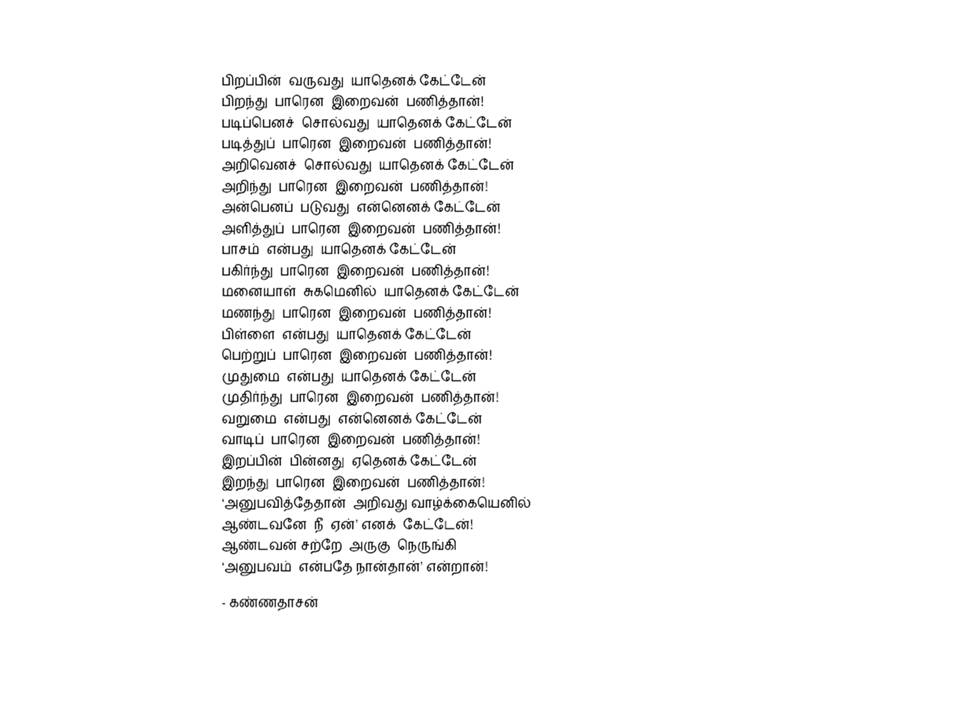 “What is birth?†I asked.
“What is birth?†I asked.
“Be born and see!†He said.
“What is learning?†I asked.
“Learn and see!†He ordered.
“What is wisdom?†I asked.
“Be wise and see!†He ordered.
“What is love?†I asked.
“Give it and see!†He said.
“What is affection?†I asked.
“Share it and see!†He told.
“What is conjugal bliss?†I asked.
“Marry and see!†He said.
“What is a son?†I asked.
“Have one and see!†He said.
“What is old age?†I asked.
“Get senile and see!†He told.
“What is poverty?†I asked.
“Be deprived and see!†He said.
“What is after death?†I asked.
“Die and see!†He said.
“If experience alone is the path in life,
God, why do I need you?†I asked.
Leaning closer, He whispered,
“Verily, I myself am that very experience.â€
So the Pretty Woman is Now a Practicing Hindu
Posted by admin in October 2010 on October 17, 2010
By Arun Jatkar, Monroeville PA
Arun Jatkar, a long-time resident of Monroeville, is also the editor of Ekata, the North-American Marathi monthly, and a past president of Toastmasters International. n
So the Pretty Woman is now a practicing Hindu! For those who are pop-culture challenged, the woman is Julia Roberts. That brings several possibilities for joint Hollywood-Bollywood chick flicks par excellence:
1. The saffron brigade starts giving out free tickets to the movie Julia Roberts made in India last year.
2. The Shaktas in India start figuring out the best way to indoctrinate Julia as the High Priestess of Pataudi.
3. There are commotions from the Kamakshi temple in Assam to Meenakshi temple in Tamil Nadu and from the Kali temple in Kolkata to Mahalakshmi temple in Mumbai for special pujas.
4. Sonia Gandhi, worried that she is likely to be upstaged in popularity by an American woman, discusses with the Vatican to obtain a special Papal dispensation for practicing dual religionship.
5. Shahrukh Khan does not wish to be upstaged in popularity by two Gora women. He is consulting the top ten astrologers in India to decide upon the most propitious date for conversion to Hindu religion. The Shah-i-Imam issues a fatwa and Khan goes incognito (agnaata-vaasam).
6. In Dubai, the nervous painter M. F. Hussain is consulting the professors from J. N. University in New Delhi on the likely fallout.
7. Professors from the J.N. University leave New Delhi for a month-long huddle session at Aligarh Muslim University to come out with the most positive secular spin on Julia Roberts’ conversion to Hinduism.
8. The Marxists in West Bengal and Kerala, the Naxalites in Srikakulam district of Andhra Pradesh, and Maoists in Jharkhand declare a week-long “India Bandh” protesting Julia’s conversion to Hinduism.
9. Since the word “Juli” means “twin” in Marathi, many Maharashtrians are wondering why no one is talking about Julia’s sister.
10. Bal Thakaray sends a few Shivasainiks to USA to tell Julia Roberts’ sister that if she becomes a Hindu, Shivasena will get her elected as the Mayor of Mumbai for life.
e-mail: ajmarathi@yahoo.com
Chinmaya Mission’s Ramayana discourse
Posted by admin in October 2010 on October 17, 2010
by Kris Gopal, Upper St. Clair, PAÂ
Chinmaya Sanjeevani of Pittsburgh hosted a 5-day discourse on Sundarkand of Tulasi Ramayan by Swami Tejomayananda, the head of the Chinmaya Mission worldwide. The event was organized at the Monroeville Convention Center. Sri Goswami Tulsidas, in Sundarkand sings praise and glories of Hanuman and Sri Rama.
With his good grasp of the Sundarakand, both the original in Valmiki’s original and Tuladidas’ re-rendering of it, the Swami treated the devotees to a delightful discourse. His passionate rendering of the verses and his interpretation made simple and relevant to contemporary life, were quite impressive. Sprinkling humor, he delighted the audience with his inimitable story-telling skills.  Hidden in these verses, he told his audience, are the guidelines for living a life with contentment and in peace.
On Tulasidas Ramayana: Saint Tulasidas (time: 16th century) known as Rambola, became a devotee of Rama at the nudging of his wife, and wrote the Rama-carita-maanasa in Avadhi, a Hindi dialect, popular in Eastern Uttar Pradesh at that time. Tulasi Ramayanam is popular in northern India.
On the opening evening, the students of Chinmaya Sanjeevani Bala Vihar recited the Guru Stotram. Tiny tots and young children recited from memory the Sanskrit verses with perfect diction in front of a large audience. The Bala Vihar teacher Shuba Sriram arranged this group singing. The kid’s age ranged from 3 to 13 years.
An exhibition in the hall highlighted the mission’s activities, sold books. Balavihar activities for children and youth is one of the big part of the activities of the Chinmaya mission. The Sunday classes teach young enthusiastic children the basic tenets of the Hindu faith and culture, Sanskrit slokas and the essence of the Bhagavad Gita. One parent summed up their experience in bringing their children to the balavihar classes: “We too benefited in our spiritual growth in these classes.”
During the five days many other activities were also held both at the Convention center and at the Chinmaya Mission’s Sanjeevani center at Monroeville. One was the rendering of Hanuman Chalisa, forty 2-line verses in praise of Hanuman in Avadhi also the work of Tulasidas Goswami. Chalis in Hindi means literally “forty.” Reciting these verses, the Swamiji said, helps people to purify their thoughts and speech, which reduces mental clutters and calms mind. This reduces anxiety and fear, which aids in recovering from debilitating sicknesses.
Hanuman Chalisa is sung in India with great love and devotion. Some sing it as a daily prayer. The Swamiji sang it to the delight of the devotees in different ragas and explained its meanings.
At the Chinmaya Sanjeeveni facility at Monroeville, the Balavihar children welcomed Tejomayananda.
The Mahotsav was successfully organized under the leadership of local mission President Mrs. Smita Gosai aided by host of volunteers and Bala Vihar teachers assisting her with long hours of work. They also worked to feeding all the attendees with delicious meals all the days.Â
Â
Â
Â
Â
Â
Â
Â
Â
Dekho Yahan Hindustan our Pakistan
Posted by admin in October 2009, October 2010 on October 17, 2010
 This is not some synchronized sports event or a scene in street theater in one of New York’s ethnic festivals. This is during the official flag lowering ceremony at the Indian-Pakistan border at Wagha between the states of Indian and Pakistani Punjabs — yes, India and Pakistan have states with identical names. The white line at the bottom is the official border. Soldiers in black are Pakistani soldiers and those in khaki are Indian jawans.
This is not some synchronized sports event or a scene in street theater in one of New York’s ethnic festivals. This is during the official flag lowering ceremony at the Indian-Pakistan border at Wagha between the states of Indian and Pakistani Punjabs — yes, India and Pakistan have states with identical names. The white line at the bottom is the official border. Soldiers in black are Pakistani soldiers and those in khaki are Indian jawans.
This 50-plus year old well choreographed simulated spectacle in jingoism by Pakistani and Indian soldiers is a daily tourist attraction. One wonders how the two countries that do not agree diplomatically on anything, mutually evolved this absurd synchronized jugalbandi tamasha.
There is a new twist to this daily ritual. In July 2010, India unilaterally decided to lower the theatrical aggression in what The Hindustan Times calls “good-natured rivalry.” Soon, Pakistan reciprocated, lowering its simulated belligerence. But don’t expect any thaw between the two countries whose views of their own common history is at such wide variance.
The reason for the reduced belligerence in the ridiculous enactment is more orthopedic than diplomatic. The soldiers participating in the daily rituals ended up with mild-to-severe knee injuries. If you Google search “Change of guard at Wagha border,” you will get several video clips and see for yourself the absurdity of this aggressive seema-tamasha.– KSV

